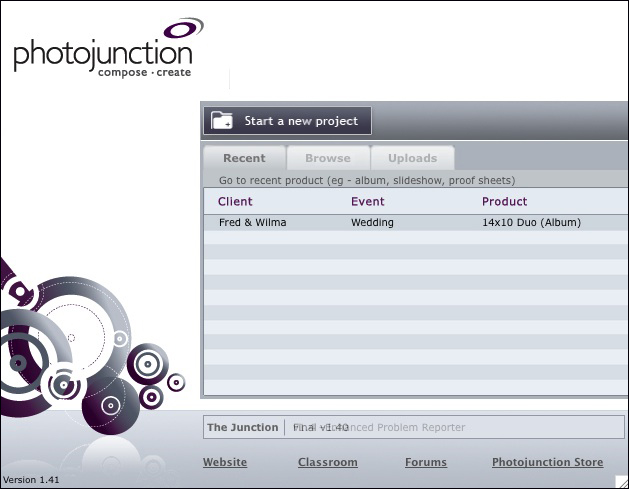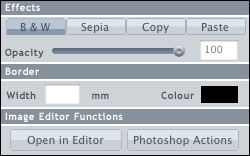Photojunction definitions and
Photojunction definitions and terminology
Below are a few common words we use in Photojunction and how we use them to talk about and design albums.
Clients, events, products and exports


loading...


In Photojunction we work on Projects, which consist of four linked components: Clients, Events, Products and Exports.
We shoot an Event (eg a wedding) for our Clients (eg the bride and groom), who buy Products (eg albums). Clients can be associated with more than one Event, and each Event can have multiple Products. Products can have Exports (eg print files or movie files, depending on the product).
You can't create a new Product (let's say an album) directly. First, you must link it to both a Client and an Event. This is so Photojunction can keep track of all your work.
Album resources and lab settings
Album Resources and Lab Settings are control files to help you ensure that the Products you design and the Outputs from them comply with what your suppliers need. For example:
• Your page layouts are the right size and follow your supplier's specifications.
• Your image files are the correct dpi, size and file type. Not getting these basic requirements right leads to huge amounts of frustration and wasted time for both you and the vendor.
Layouts and page types
A Layout is what you see when you browse through an album - the back of one Page and the front of another. Each page has two Sides.
On a Standard layout each side acts as a separate design area. For example the Centre Align tool places an image in the centre of the side - you cannot place an image across the centre of the layout (the gutter or spine of the book).
On a Panorama layout, both sides comprise one design area: now you can place an image across the centre of the layout.
In Photojunction, you add and delete layouts from your album design. You cannot move or delete sides. You can move layouts forward and back in the album by dragging them in the preview Tools palette.
Apertures, cropping and effects


loading...


Finally, whenever you see an image on a layout, it appears in an Aperture. The apertures in matted albums are self-evident (the holes in the card that reveal the print), but we talk about "apertures" in un-matted albums as well.
You don't necessarily see the entire image in an aperture (they appear Cropped). Sometimes the aperture doesn't show the whole image simply because it has a different aspect ratio. Other times you'll want to zoom in and display just a part of the image.
You can add Effects to an Aperture, such as displaying the image greyscale or sepia, changing its opacity or adding a border. These don't change the image in the aperture - they just tell Photojunction to display an image greyscale or sepia when it's in this aperture. Swap images and the effects will apply to the new one.





